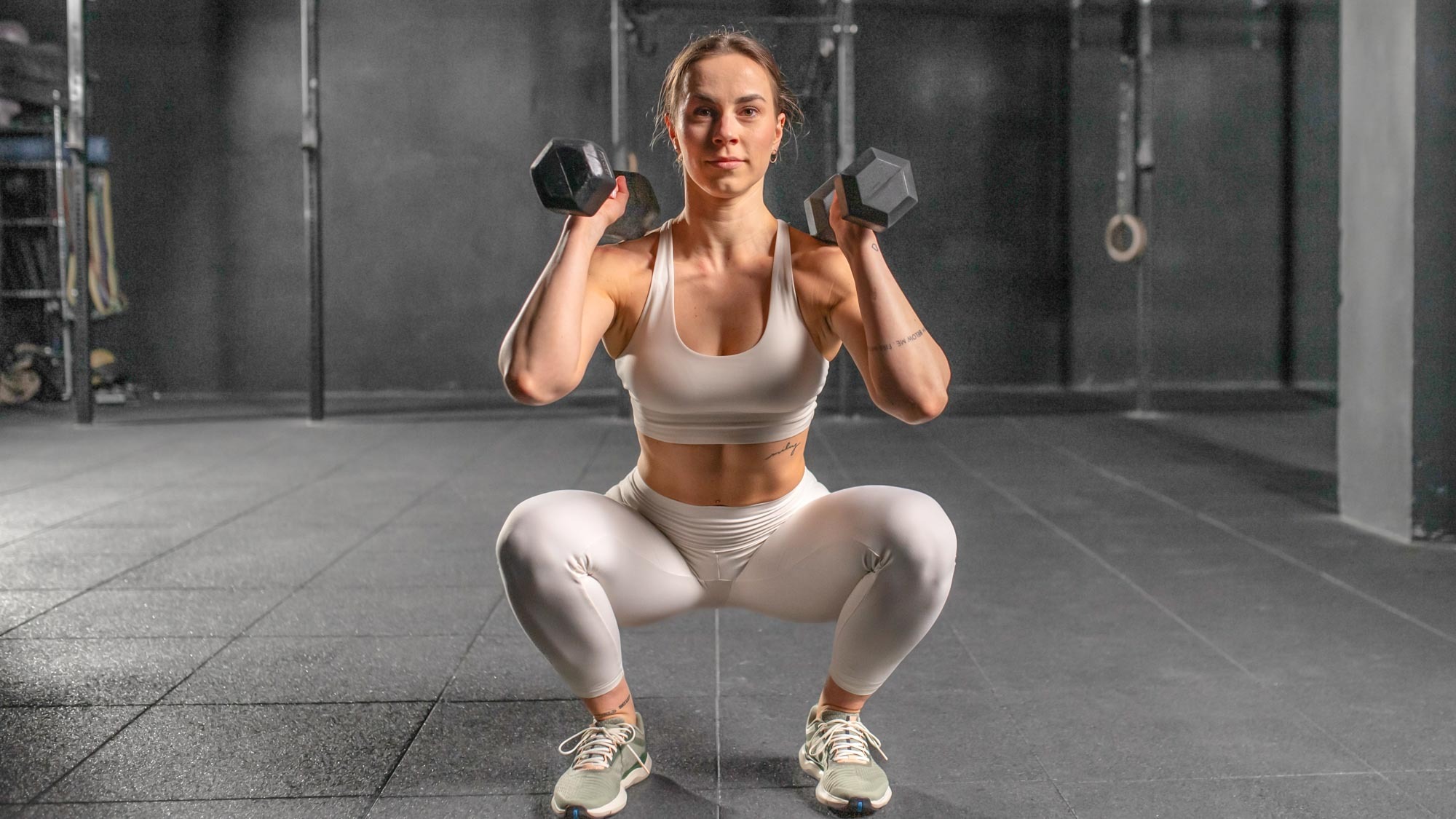
Fitness fads come and go, but with its ability to future-proof your body for today, tomorrow and beyond, functional fitness workouts are here to stay.
This type of strength training contains a mix of pulling, pushing, bending and twisting movements. From squatting (which is something we do when we sit down) to a deadlift (which you might reenact when bending down to pick shopping up off the floor).
Whether you use free weights or bodyweight, functional fitness workouts prepare your body for everyday life by mimicking these day-to-day actions.
Focusing on your functional fitness can prevent injury, help you become stronger and give your balance and coordination a boost. So, to help you reap these rewards, Michigan-based personal trainer Kaleigh Cohen has compiled a 30-minute functional fitness workout.
Cohen uses a pair of dumbbells in this workout. However you could always use a pair of the best adjustable dumbbells, so you can make the load lighter or heavier based on the move you’re doing. Once you’ve rolled out a yoga mat to help cushion your joints and protect your floor, you’re ready to get stuck in.
How to do this 30-minute functional fitness workout
This functional fitness workout is arranged into a high-intensity resistance training workout (HIRT), with six rounds of three exercises. “It will be a challenging format, but also so worth it when you experience the benefits of functional training,” Cohen says.
In each round, the first three moves are bilateral exercises (movements that use both sides of the body to perform a movement). Each move is completed for 45 seconds, followed by 10 seconds of rest.
You’ll then head straight into a superset (so two different exercises back-to-back with little rest in between). Each exercise in the superset will be a type of unilateral exercise. This means it will use one arm or leg as the primary mover.
So in this instance, you’ll reenact each move on your left hand side for 30 seconds, before doing the same on the right hand side for 30 seconds. This is followed with 10 seconds of rest before heading into your next circuit.
The exercises include weighted moves you might do in your day to day. For example, a suitcase squat, which is as if you’re lifting your suitcases, along with rotating rows, which mimic the movement of picking up something heavy off the floor.
What are the benefits of functional fitness?
In a nutshell: there are many benefits of functional fitness workouts. “This style of training will improve balance, coordination, muscular strength, and endurance,” Cohen explains “Training functionally will make everyday life tasks easier and help to prevent injury,” the trainer adds. “Plus, unilateral training is a great way to improve muscular imbalances."
Functional fitness workouts focus on compound exercises. These types of exercises work multiple muscles and joints in just one move. So not only are functional fitness classes time-efficient, but they’ll help you build overall strength and flexibility more quickly.
Plus, as one research study in the journal Sustainability concluded, performing functional fitness classes three times a week for eight weeks can help improve balance in middle-aged adults. And, according to the European Review of Aging and Physical Activity, this training style can also help with the prevention of muscle atrophy (muscle loss).







